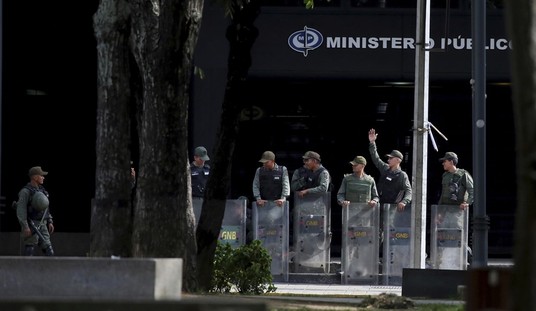The Washington Post chronicles the evolution of a new way of doing … well … something. Suppose we refer to it as ‘force’. The role of applying force has gradually moved from the Armed Services to one of the President’s aides accountable only to him. “Targeted killing is now so routine that the Obama administration has spent much of the past year codifying and streamlining the processes that sustain it.”
They’ve created an assembly line for ‘direct action’. Drones and other targeted hits, once regarded as a temporary expedient to strike at fleeting targets have now become a mainstay of President Obama’s whateveryoucall it on whomeveryoucallit — a permanent activity without without a regular or accountable institution . At the heart of the process is the management of a database called the “disposition matrix”.
The Obama administration has touted its successes against the terrorist network, including the death of Osama bin Laden, as signature achievements that argue for President Obama’s reelection. …
Less visible is the extent to which Obama has institutionalized the highly classified practice of targeted killing, transforming ad-hoc elements into a counterterrorism infrastructure capable of sustaining a seemingly permanent war. Spokesmen for the White House, the National Counterterrorism Center, the CIA and other agencies declined to comment on the matrix or other counterterrorism programs.
“Is it’s like your lawn mower,” said Bruce Riedel, a former CIA analyst and Obama counterterrorism adviser. “You’ve got to mow the lawn all the time.” And the mower-man is John Brennan.
The “playbook,” as Brennan calls it, will lay out the administration’s evolving procedures for the targeted killings that have come to define its fight against al-Qaeda and its affiliates. It will cover the selection and approval of targets from the “disposition matrix,” the designation of who should pull the trigger when a killing is warranted, and the legal authorities the administration thinks sanction its actions in Pakistan, Yemen, Somalia and beyond….
What was once a disparate collection of tactics — drone strikes by the CIA and the military, overhead surveillance, deployment of small Special Forces ground units at far-flung bases, and distribution of military and economic aid to threatened governments — has become a White House-centered strategy with Brennan at its core…
When operations are proposed in Yemen, Somalia or elsewhere, it is Brennan alone who takes the recommendations to Obama for a final sign-off.
War is now effectively made from the White House. This may confuse some in America who know that despite Libya, despite operations across Africa, the Arabian Peninsula and Southwest Asia are convinced that the Obama administration is not actually at War, nor has ever started one, since that is a power reserved to Congress, but is only engaged in some piddling ‘kinetic military action’. Still, the Washington Post writes “the concentration of power in one person, who is unelected and unconfirmed by Congress, does not sit well with critics.”
The similarity been killing people and killing people is altogether too close to completely banish the thought that Obama may be prosecuting war out of his Blackberry with the help of Brennan, who according to the Post found his career was over until he joined Barack Obama’s campaign. The two recognized in each other strategic soul mates and believe they have found a ‘model’ for managing terrorism. Critics think they have only found a way of spreading it.
However that may be everyone now wants to get into the act. Some sources quoted suggest CIA want their own killer robots. “CIA Director David H. Petraeus is pushing for an expansion of the agency’s fleet of armed drones, U.S. officials said. The proposal, which would need White House approval, reflects the agency’s transformation into a paramilitary force, and makes clear that it does not intend to dismantle its drone program and return to its pre-Sept. 11 focus on gathering intelligence.”
And why stop there? How about Homeland Security, the EPA, Post Office and the DMV? The pacifist movement has made the word “war” — with its uniforms, rules, declarations of hostility and even victory — so unpalatable that it has made mass assassination by a Star Chamber seem absolutely enlightened. This is what is called progress.
Having created the “disposition matrix” the bureaucratic struggle in Washington is now over who controls this list; who can add to it; who can make their own. “We didn’t want to get into the business of limitless lists,” said a former senior U.S. counterterrorism official who spent years overseeing the lists.
At first glance it seems as if the administration has scored a coup by abolishing war through the brilliant expedient of calling it something else, reducing it to an innocuous bureaucratic exercise of power (“kinetic military action”) and allowing para-military — oops, parakinetic — operations to proliferate. Lena Dunham would be impressed, especially by the manner in which Congress has conveniently been taken out of the loop.
But although the administration may not be interested in strategy, strategy remains interested in it. Missions such as deterring Iran remain the province of the Army, Navy, Air Force and Marines. And the State Department, though without its “disposition matrices” as of yet is busily dealing with all kinds of people who would once have been called operators.
This creates many cracks through which a variety of things can fall through. Recently British newspapers reported that Her Majesty’s Government refused an administration request to use UK facilities in the Med for contingency planning on a raid in Iran ironically citing their own lawyers.
The British government rejected U.S. requests to use military bases in the United Kingdom as part of a build-up in the Gulf, citing legal concerns that a pre-emptive strike on Iran would violate international law, The Guardian reported.
Citing unnamed U.K. officials, the Guardian reported that the United States has made informal requests for access to British bases in Cypress and British territories in the Atlantic and Indian oceans as part of contingency planning for Iran.
But British ministers have responded with legal advice from the U.K. attorney general’s office that says Iran does not currently represent “a clear and present danger.”
As a result, providing assistance to U.S. forces potentially involved in a strike on Iran would violate international law, according to the Guardian.
The Syria war — or whatever you want to call it — is spreading into Lebanon. And the State Department, after backing the current Hezbollah supported Lebanese government, is now backing the March 14 movement after abandoning it in the first place.
You can zig and zag all you want without the media noticing if you’re a man on the Left. Being progressive means you never have to zay you’re zorry.
The Americans at the Benghazi consulate may have also fallen through the cracks. The New York Times reports “that he and top military commanders ‘felt very strongly’ that deploying American forces to defend against the fatal attack last month on the United States diplomatic compound in Benghazi, Libya, was too risky because they did not have a clear picture of what was happening on the ground.”
Mr. Panetta was at the White House for a regular meeting on the afternoon of Sept. 11 as the first reports of the attack unfolded, an American official said. By that evening Mr. Panetta had consulted with General Dempsey and General Ham and had ordered a number of American military forces in the region to move closer to Libya.
Defense officials say they did not receive a request for military support from the State Department as the attack unfolded.
Yet another finger is pointed. Doubtless it will be repointed and round and round it goes. Hillary’s ambassador may have been doing something for someone against someone. And when the crisis came it just all too confusing to an administration run on such a mesh of intersecting authorities.
Benghazi illustrates the problem of the President having the authority for everything and the responsibility for nothing.
The problem with fragmenting the war function by calling simply it something else is that it does not absolve the President from pursuing its imperatives; what used to be called strategy and unity of command; identifying a center of gravity and creating a roadmap to achieving it. ‘Mowing the lawn’ is not a substitute for horticulture; just is part of it. As Lidell-Hart once put it, “in peace we concentrate so much on tactics that we are apt to forget that it is merely the
handmaiden of strategy.”
The Obama administration’s new stealth wars seem to be vulnerable to counterattacks by the enemy along the administrative boundaries. But then al-Qaeda could actually be thinking of where they want to end up where perhaps the American commander in chief has not.
Belmont Commenters
How to Publish on Amazon’s Kindle for $2.99
The Three Conjectures at Amazon Kindle for $1.99
Storming the Castle at Amazon Kindle for $3.99
No Way In at Amazon Kindle $8.95, print $9.99










Join the conversation as a VIP Member